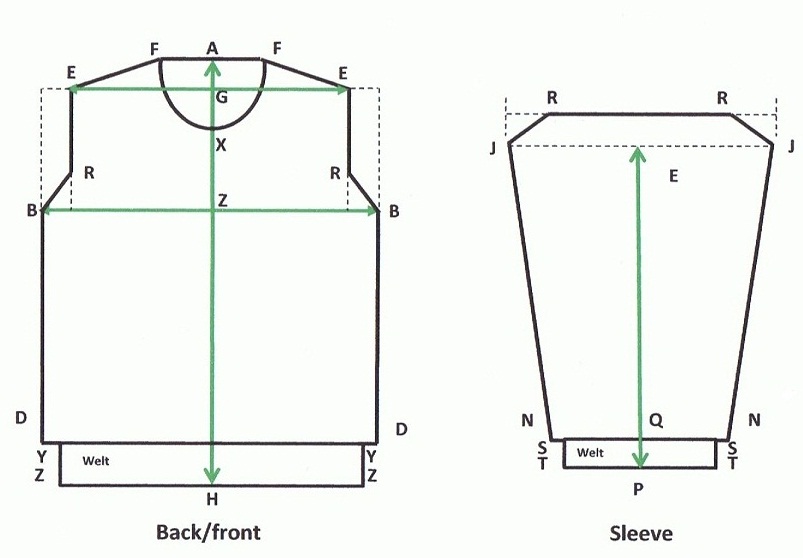Learn how to design or adapt a semi-fitted sleeve.
Credit: Blocks devised by Kathleen Kinder.
Measurements for a semi-fitted sleeve
For an accurate individual fit it is important to take exact measurements for the points shown and use those to calculate the rows and stitches.

Key to measurements
- EE Shoulder ball to shoulder ball
- E to line BZB Depth of armhole
- JRRJ sleeve head fits comfortable into whole of armhole BRERB
- JEJ widest part of sleeve
- RB=RJ measurement of the diagonal
Variation on the dropped shoulder line block
The diagram shows the outline of the original dropped shoulder line block by a dotted black line. You can work out the shaping for the semi-fitted sleeve as follows:
- Draw a pencil sketch of the back/front and sleeve in a notebook and add essential measurements.
- Subtract the shoulder ball to shoulder ball measurement EE from BB (½ total body width including ease)
- Divide your answer by 2 so you get the measurement for each armhole/sleeve top. That answer is the cut out between the vertical lines running from E and B but the cut out is shaped within the depth of the armhold or sleeve top. ERB shows the perimeter line.
- Looking at the diagrams, visualize matching J on the sleeve to B on the body and then rotate the sleeve by 90° anticlockwise. You will see that the sleeve fits into the body neatly at R.
- The raglan diagonal can be between 1/3 and 2/5 depth of armhole. If needs be, draw the full scale sleeve head and armhole cut out on paper to ensure the measurements are correct.
- Calculate the rows and stitches using your tension swatch.
- Note that in knitting, the diagonals will form curves.

